Von Kármán Effect over Cylinder, ANSYS CFX
$80.00 $40.00 Student Discount
- The problem numerically simulates the Von Kármán effect behind a cylinder using ANSYS CFX software.
- The geometry is designed in a 2.5D model with the Design Modeler software.
- We performed the mesh of the model with ANSYS Meshing software, and the element number equals 77,262.
- Body of Influence option is used to create smaller elements around the cylinder.
- The Transient and Steady form of the solution is performed.
To Order Your Project or benefit from a CFD consultation, contact our experts via email (info@mr-cfd.com), online support tab, or WhatsApp at +44 7443 197273.
There are some Free Products to check our service quality.
If you want the training video in another language instead of English, ask it via info@mr-cfd.com after you buy the product.
Description
Description
In this project, the Von Kármán effect behind a cylinder is simulated in steady and unsteady form via ANSYS CFX software.
Von Kármán Vortex Street, is a recurring pattern of whirling vortices in fluid dynamics that is brought on by the process of vortex shedding, which is what causes the fluid’s flow to be unsteadily separated around blunt objects.
The 2.5D geometry of the solution is designed in ANSYS Design Modeler software. The cylinder with the diameter of 0.5m is placed at middle of the domain. The Airflow enters the domain with the velocity of 0.1m/s.
Then the geometry is connected to the ANSYS Meshing software. The elements with a high quality is produced in tetrahedral type. Also, the Body of Influence option is used to create smaller elements around the cylinder to capture the solution parameters more accurately.
Furthermore, 10 layers of inflation in set around the circle which results in overall elements equal to 77,262.
Methodology: Steady and Transient Von Kármán
Two simulations are performed which one is Independent of Time (steady state) and the other one is Transient. In addition, the effects of gravity are active. There is a surface tension coefficient of 0.072N/m between water and air.
The turbulence model is Shear Stress Transport (k-ԑ SST).
The Advection Scheme and Turbulence Numeric is High Resolution. Also the Transient Scheme is set to Second Order Backward Euler.
Results
At the end of the solution process, two-dimensional contours, vectors and streamlines related to velocity, pressure and the Turbulence Kinetic Energy are obtained.
As shown in the figures, the Kármán Vortex Street is formed behind the circle clearly. The periodic behavior of airflow over time is displayed in animations exported from CFD-Post software.
Asymmetrical flow patterns develop around the body and alter the pressure distribution when a single vortex is shed. This means that the body in question may vibrate as a result of the periodic lateral forces produced by the alternate shedding of vortices.
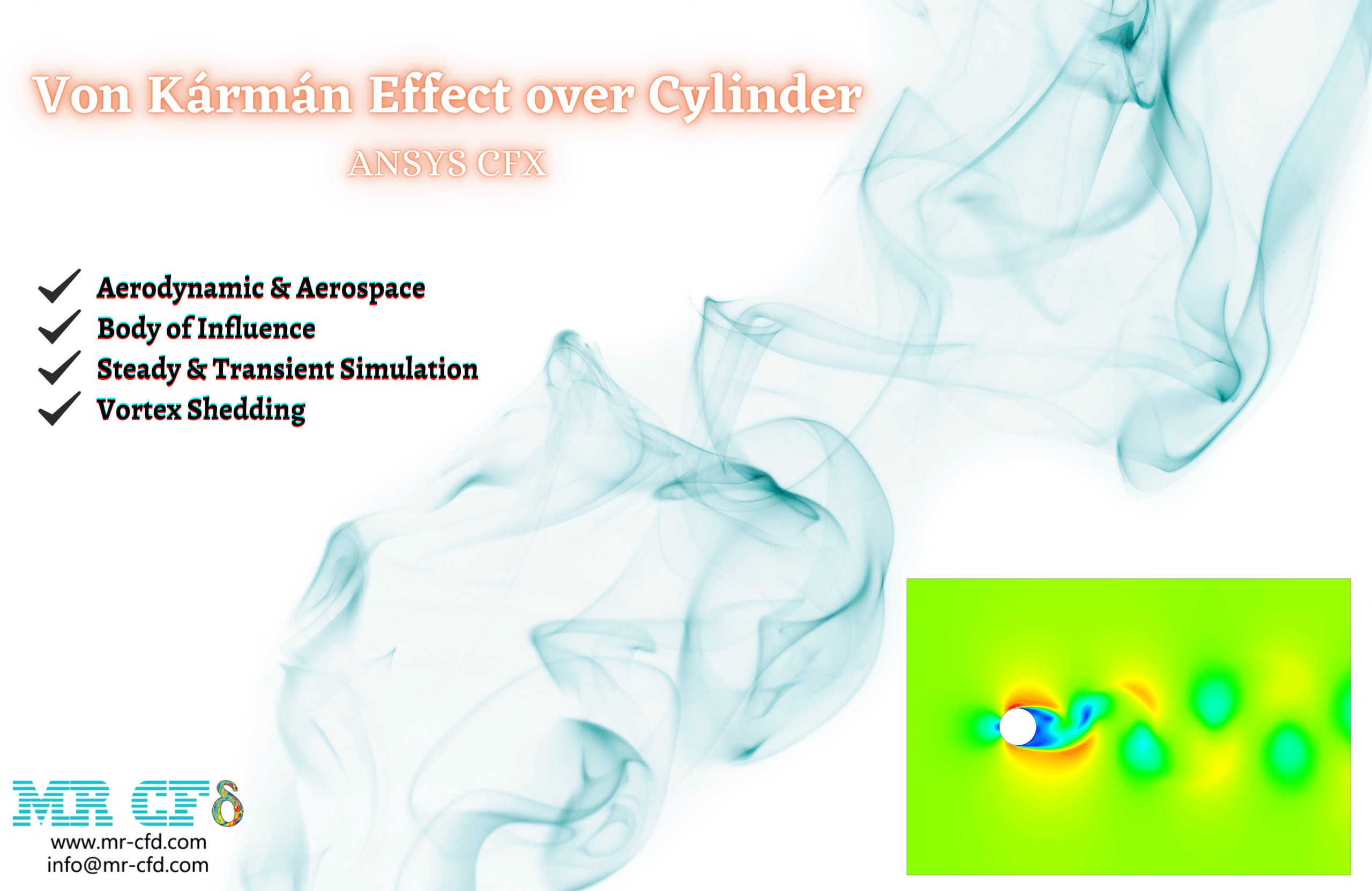
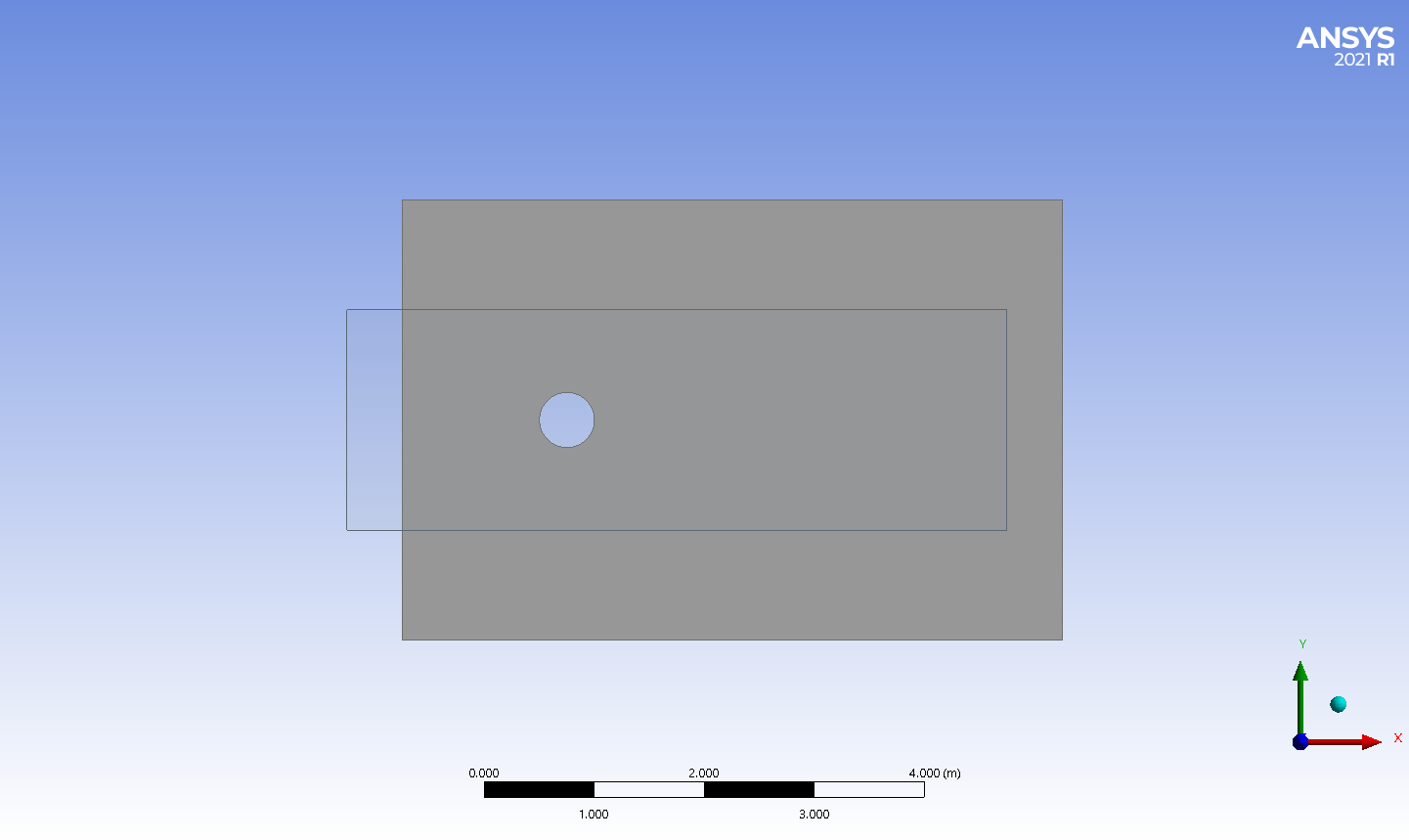
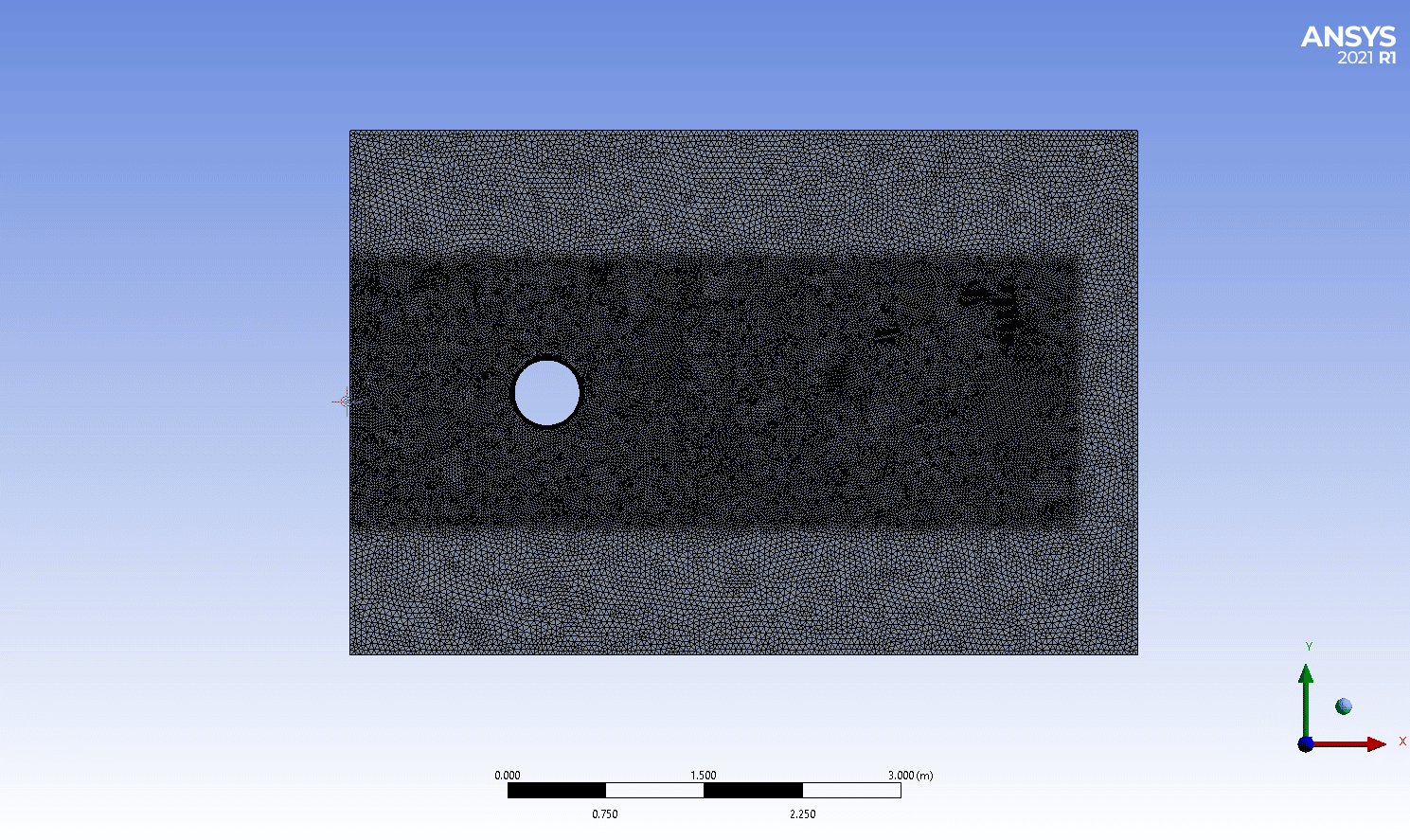
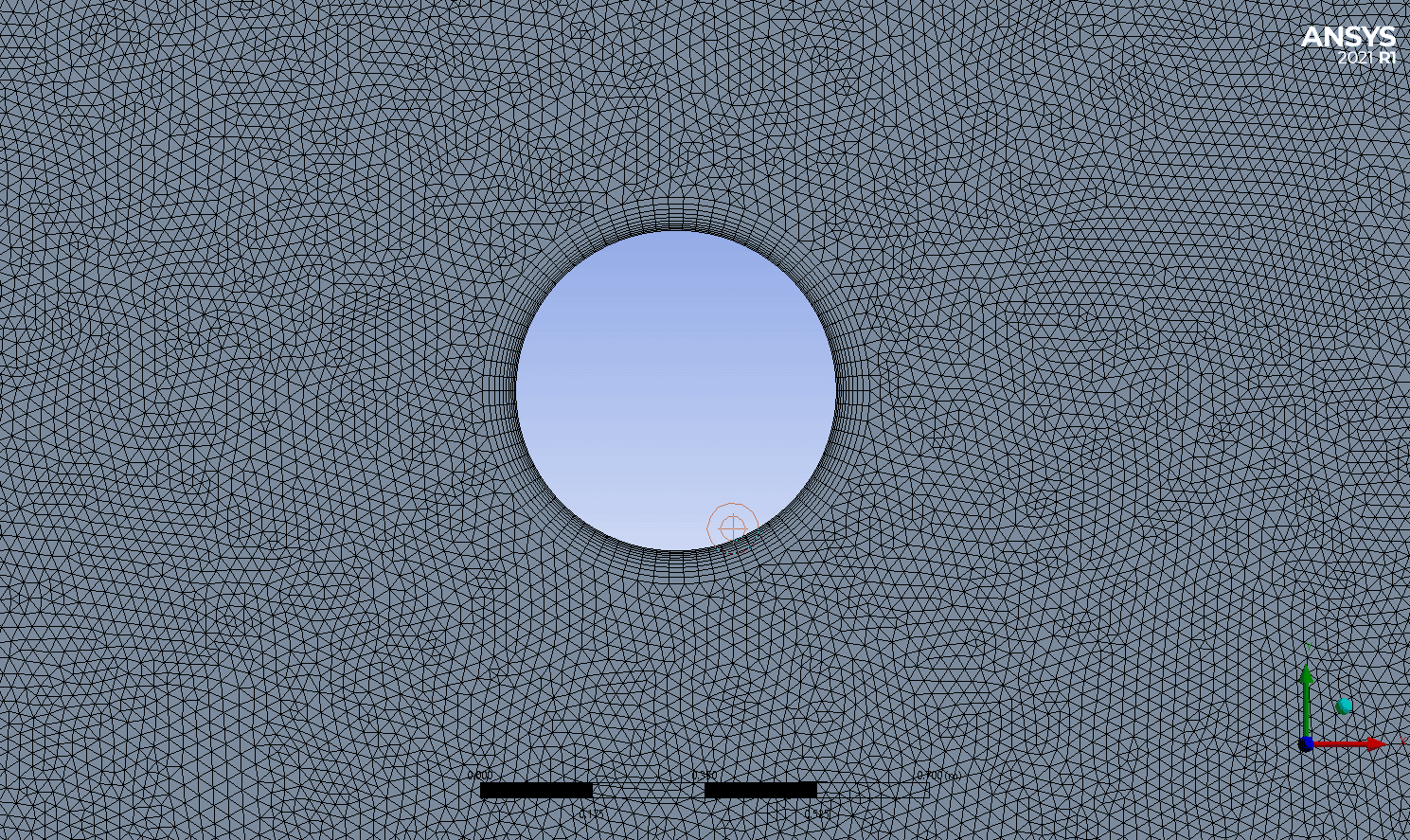
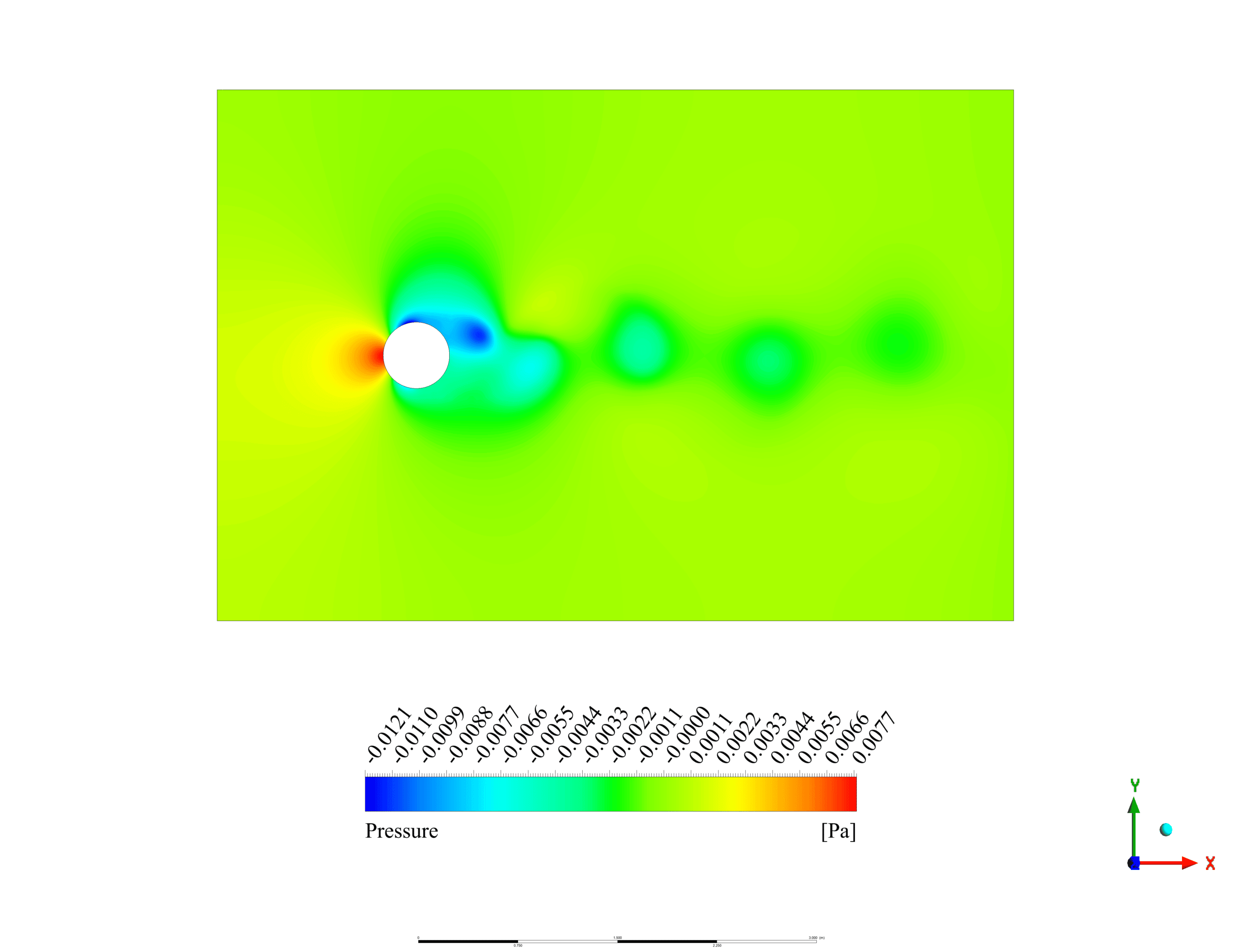
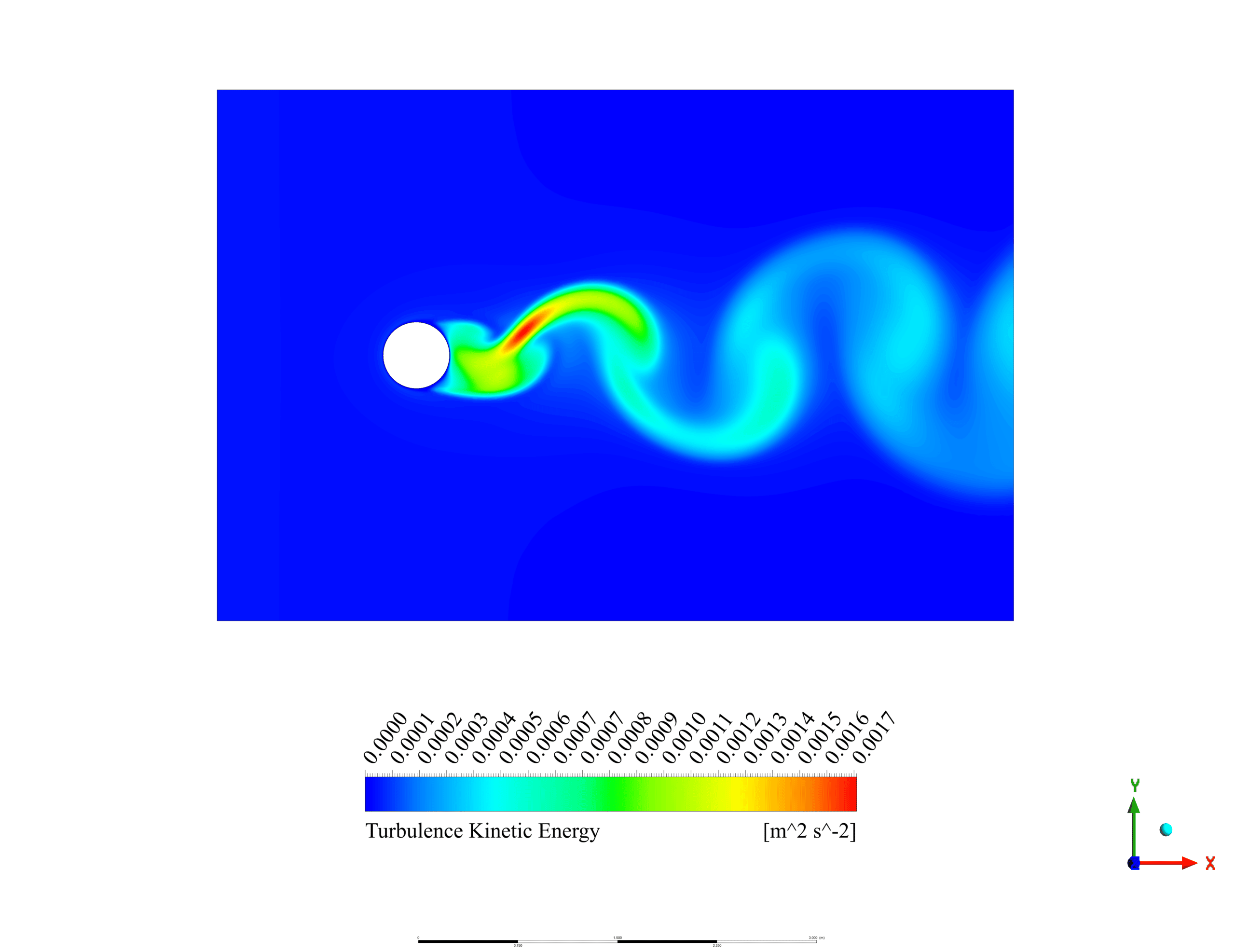
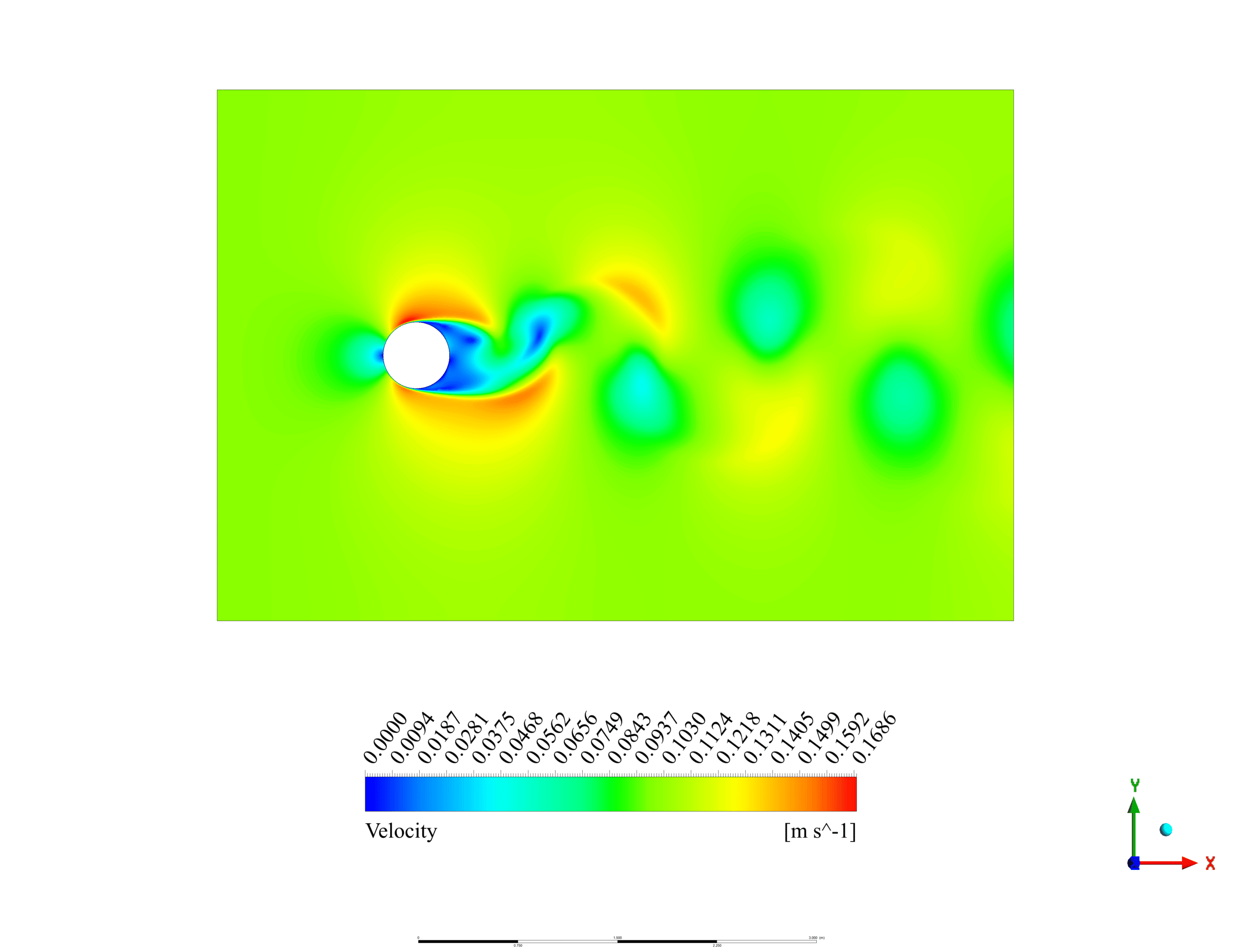
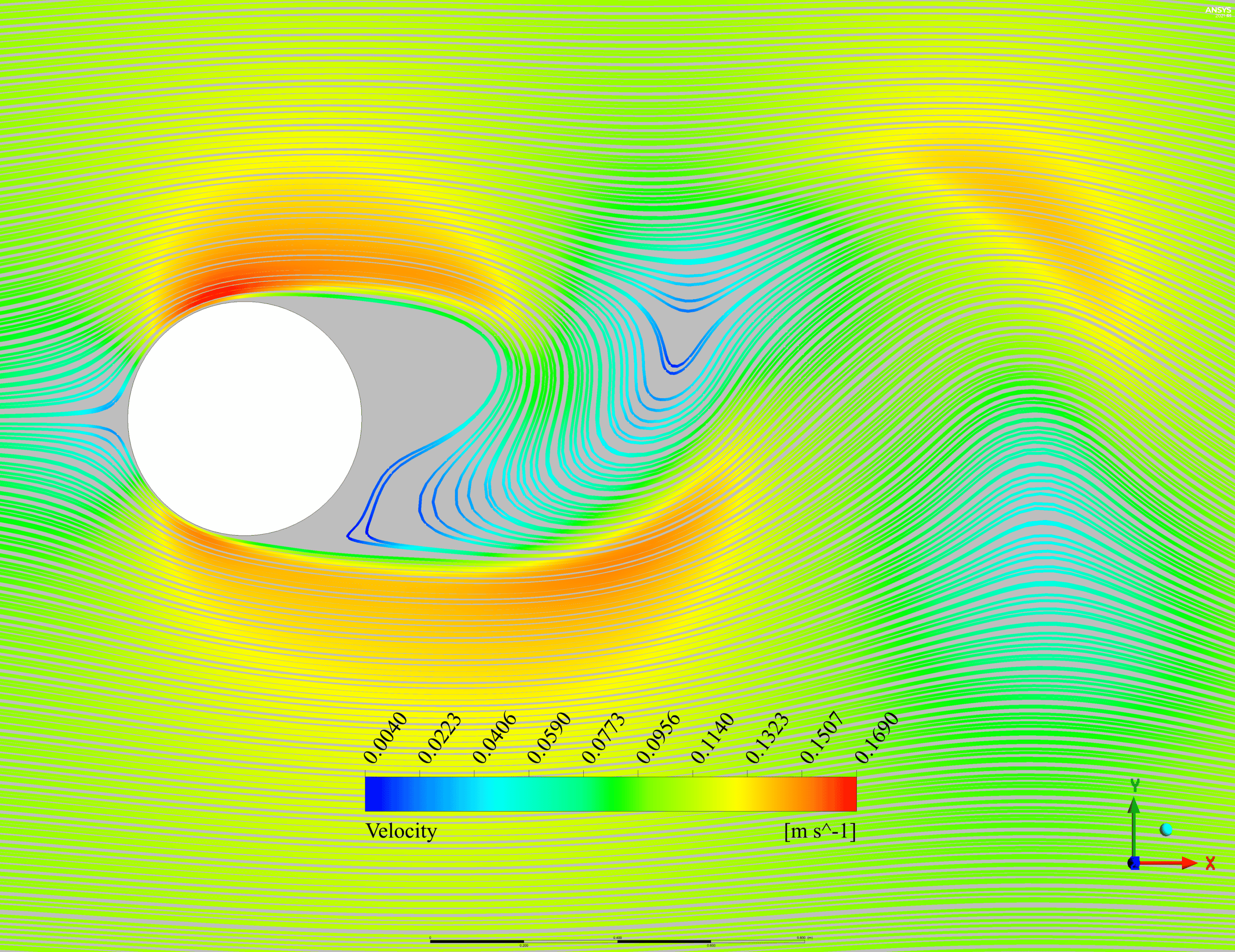
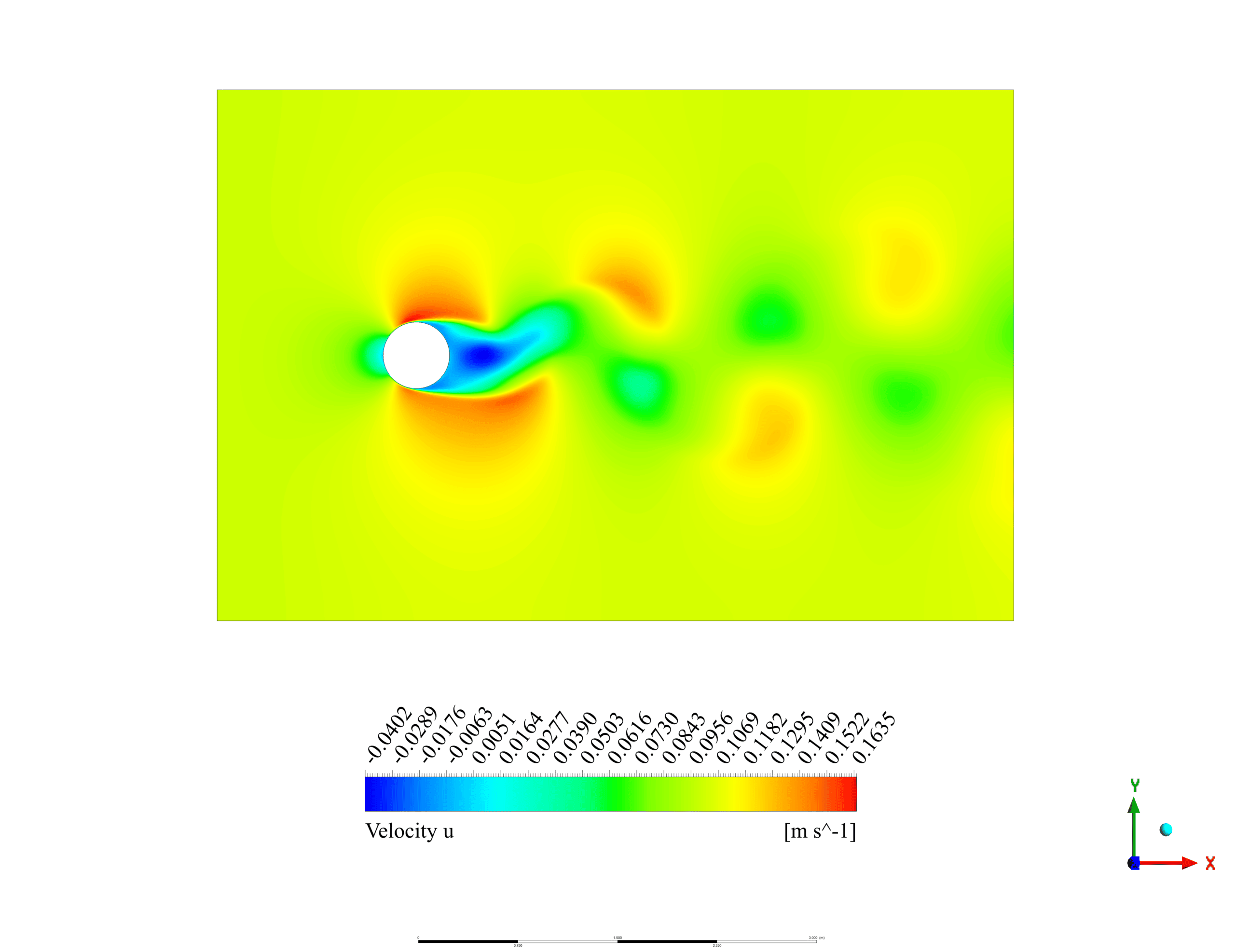
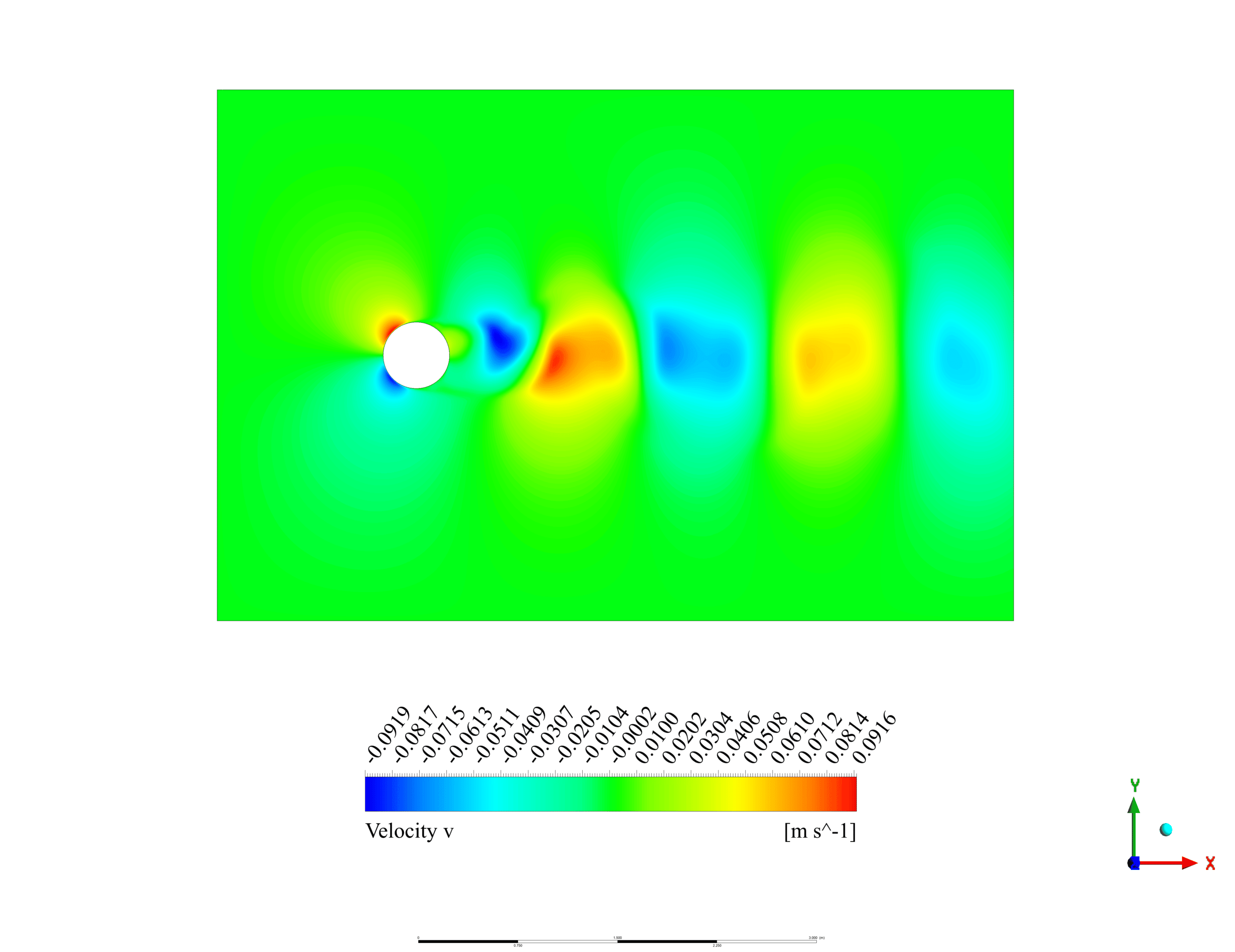
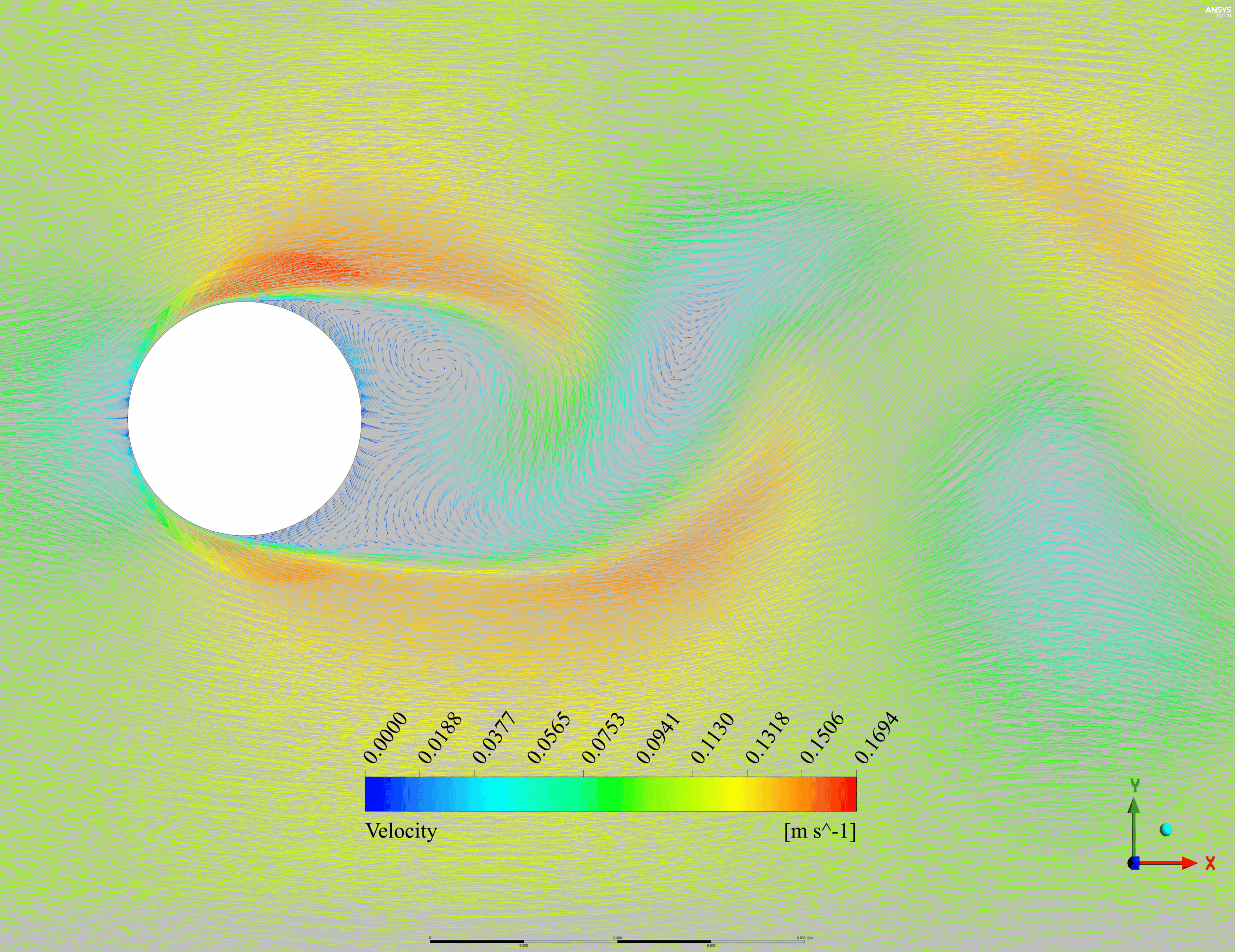
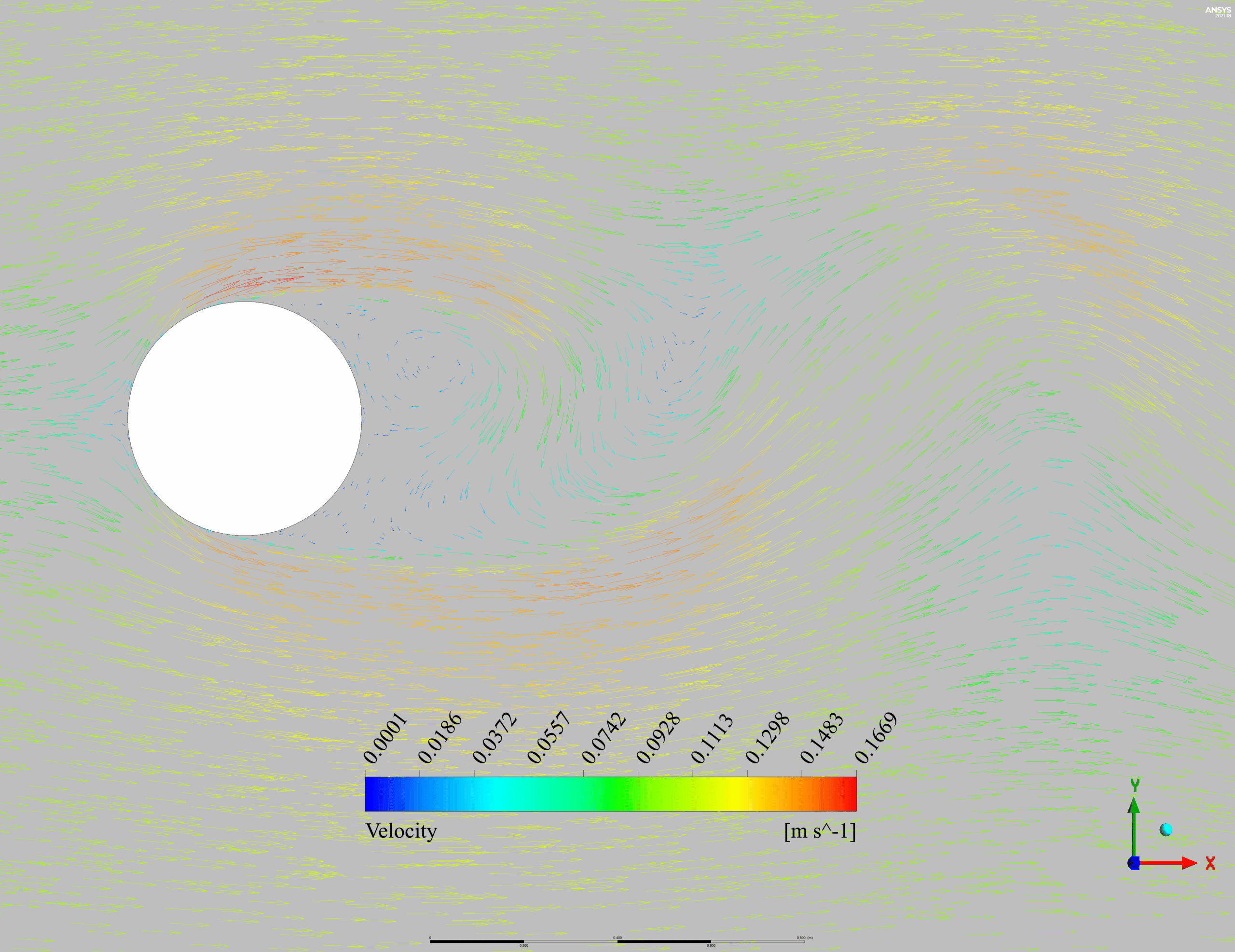


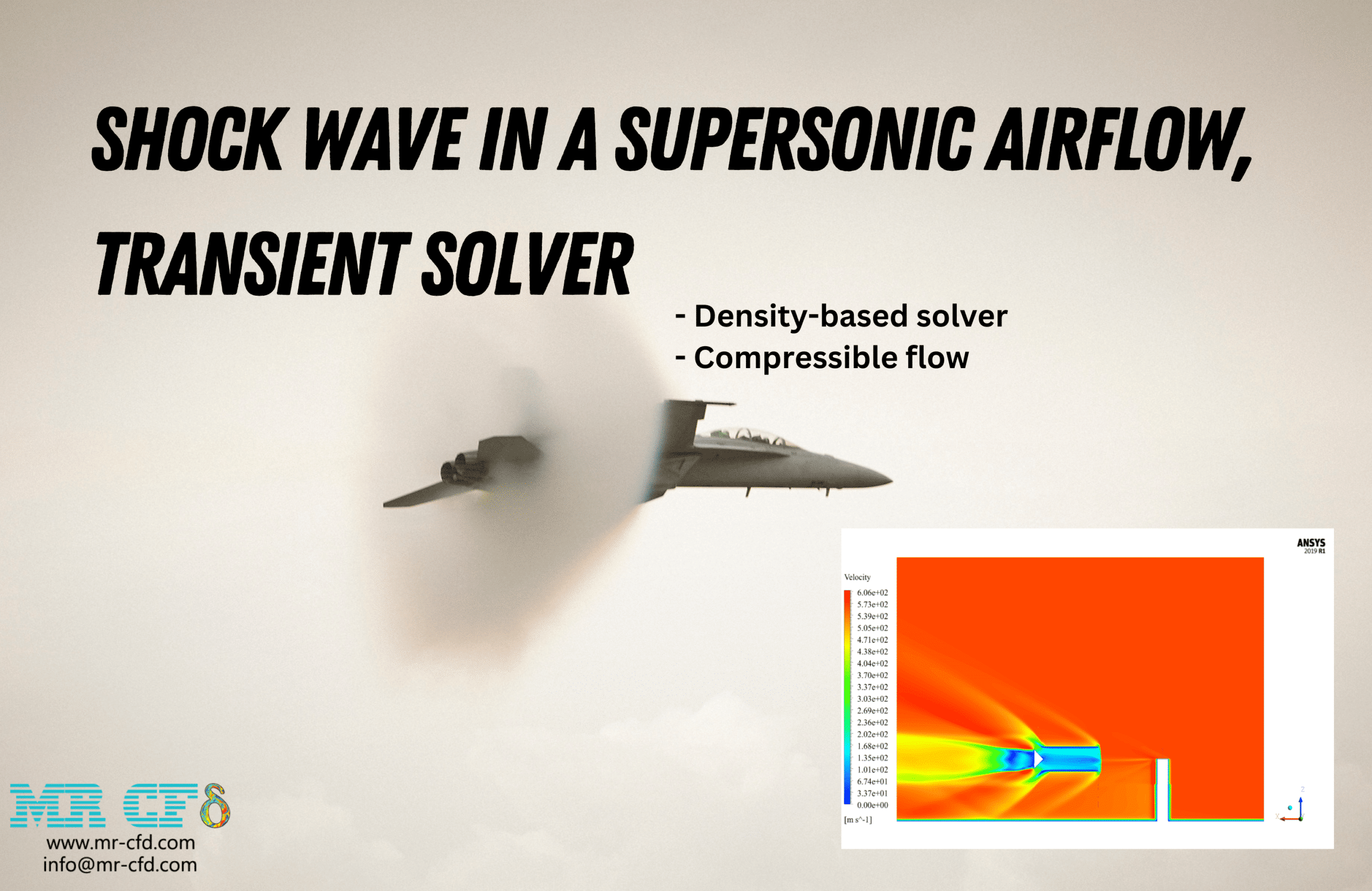

Dr. Zoie Barton –
Everything about the Von Kármán effect over a cylinder was clearly explained and handled expertly! True craftsmanship in both methodology and presentation of results.
MR CFD Support –
Thank you for your positive review! We’re pleased that the simulation of the Von Kármán effect over a cylinder in ANSYS CFX met your expectations and that you found the methodology clear and the results presentation professional. If you have any further questions or need assistance with similar projects in the future, please feel free to reach out to us.
Kade Leuschke –
I enjoyed seeing the creation of the Von Kármán Vortex Street in the simulations. Were there any specific challenges in calculating and ensuring the accuracy of the vortex shedding in the transient simulation?
MR CFD Support –
We appreciate your positive feedback on the visual representation of the Von Kármán Vortex Street. Capturing the vortex shedding accurately in a transient simulation can be challenging, mainly due to the need for a fine mesh around the cylinder to accurately resolve the boundaries of vortices and a small time-stepping for capturing the unsteady formation and evolution of the vortices over time. Ensuring numerical stability and reducing computational costs while maintaining high accuracy were key focuses during the simulation. These challenges were effectively addressed using optimized meshing techniques and appropriate numerical schemes.
Rubye Yundt –
The depth of the review on the Von Kármán Effect over Cylinder simulation is stellar. It’s superbly detailed and demonstrates a solid grasp of fluid dynamics principles as applied in CFX. The attention to the Vortex Street formation and its impact on pressure distribution illustrates how practically these concepts are being exploited for real-world interpretation. Thank you for outlining both the methodologies used and the final results obtained; this validation is crucial for professionals in the field.
MR CFD Support –
We’re genuinely appreciative of your thorough and perceptive review. It’s rewarding to know our efforts to provide high-fidelity simulations and comprehensive educational content are well-received. Your recognition of the application’s real-world implications is a testament to our dedication to quality and relevance in CFD learning materials. Thank you!
Ashtyn Waters –
This CFD product seems comprehensive! Are the fluttering effects on the cylinder considered due to the Vortex Shedding in the simulations, or is the cylinder kept static?
MR CFD Support –
Thank you for your kind words about our product! In the simulations covered by this learning module, the cylinder is considered static. The primary focus of this simulation is to analyze the flow patterns, specifically the formation of the Von Kármán Vortex Street behind the cylinder. While the simulation captures the unsteady behavior of the flow, any structural reactions or fluttering effects on the cylinder due to Vortex Shedding are not accounted for. The CFD model focuses on fluid dynamics and assumes a fixed cylinder boundary condition.
Marianne Daugherty –
Besides the animations, are there any specific quantitative data on vortex shedding frequency provided in the results?
MR CFD Support –
The report on the Von Kármán effect simulation indeed provides detailed visualization in the form of two-dimensional contours, vectors, and streamlines. Regarding the quantitative data on the vortex shedding frequency, the simulation captures and allows analysis of periodic airflow behavior and vortex shedding. Even though the frequency data are not explicitly mentioned in the description, one can typically calculate this using the Strouhal number relation with velocity and cylinder diameter within the CFX software post-processing. If such data was of interest, it was likely analyzed and included within the complete result set.
Austin Roberts –
The results for the simulation sound promising. Could you tell me if it is necessary to use ANSYS CFX over ANSYS Fluent for this von Kármán effect simulation, or is it possible to achieve similar results with both?
MR CFD Support –
It is feasible to conduct such simulations using both ANSYS CFX and ANSYS Fluent, as both these CFD tools are capable of capturing complex flow dynamics like the von Kármán Vortex Street phenomenology. The choice between CFX and Fluent typically comes down to user preference, specific solver capabilities, and sometimes the task-specific features unique to either tool. Both solvers have been tuned to manage similar fluid dynamics scenarios capably, including steady and transient flow setups.